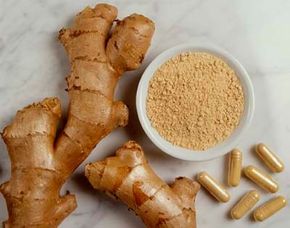Traditional Chinese medicine is an ancient practice still used by millions of people all over the world -- even after the development of modern scientific medicine.
At the root of traditional Chinese medicine is the belief that the individual (microcosm) is viewed as an integral part of the forces of nature (macrocosm). By careful observation of nature, Taoist sages were able to perceive patterns common to both the external environment and the internal climate of the human body. Over a period of thousands of years, the cumulative observations of sages all over China led to an intricate system of diagnosis and healing.
Advertisement
These traditional Chinese ancient remedies have more than withstood the tests of time -- they have passed the tests of modern medicine. The links at the bottom of this page will take you to articles that explain the theories and practice of traditional Chinese medicine. Explore the history of traditional Chinese medicine and learn how these ancient remedies -- from acupuncture to green tea -- are still practiced today.

Traditional Chinese Medicine History
The ancient beliefs and practice of traditional Chinese medicine have been healing people for thousands of years. Explore the history and development of traditional Chinese medicine.
Traditional Chinese medicine revolves around the idea of a constant state of change, explained through the theory of yin and yang. Read this article to learn how yin and yang works.
The power of qi is central to traditional Chinese medicine. Find out how qi works and how this vital substance and other basic elements compose the body and mind.
In traditional Chinese medicine, the five yin organs include the lungs, spleen, heart, liver, and kidneys. Learn how yin organs work and their relationship to the rest of the body.
The yang organs in traditional Chinese medicine are composed of the stomach, small and large intestine, urinary bladder, gallbladder, and "triple burner." Explore the functions of yang organs in this article.
Traditional Chinese Medicine Disharmony
It's amazing how traditional Chinese medicine can uncover the cause of diseases without the aid of modern technology. Learn how certain symptoms are identified through patterns of disharmony.
Traditional Chinese Medicine Causes of Illness
Many factors are considered in determining a cause of illness with traditional Chinese medicine, including dietary habits and emotions. Find out how everyday surroundings and feelings can cause illness.
Traditional Chinese Medicine Internal Organ Syndromes
Identifying which internal organs are affected by disharmony is an important step in preparing an effective traditional Chinese medical treatment. Read descriptions of lung syndromes, heart syndromes, liver syndromes, and more.
Traditional Chinese Medicine Diagnosis
Diagnosis in traditional Chinese medicine is simple yet effective -- diagnostic observation includes looking, listening, smelling, asking, and touching. Learn about traditional Chinese medicine diagnosis in this article.
Traditional Chinese Medicine Acupuncture
While acupuncture has made its way into mainstream Western culture, it remains an ancient practice of traditional Chinese medicine. Get details on acupuncture and the diseases that respond to this effective treatment.
Traditional Chinese Herbal Medicine
We've all sipped on hot herbal tea when feeling a little under the weather. Check out this article to learn more about the herbs and herbal remedies used in traditional Chinese medicine.
Traditional Chinese Medical Treatments
Exercise, massage, and a proper diet are important traditional Chinese medical treatments. Learn about moxibustion, how to do a qi gong exercise, and more in this article.
How to Treat Common Ailments with Traditional Chinese Medicine
To treat headaches, try avoiding spicy food and adding more whole grains to your diet. For the common cold, drink some miso soup with fresh ginger. See more traditional Chinese medical remedies for common, everyday ailments.
Advertisement
